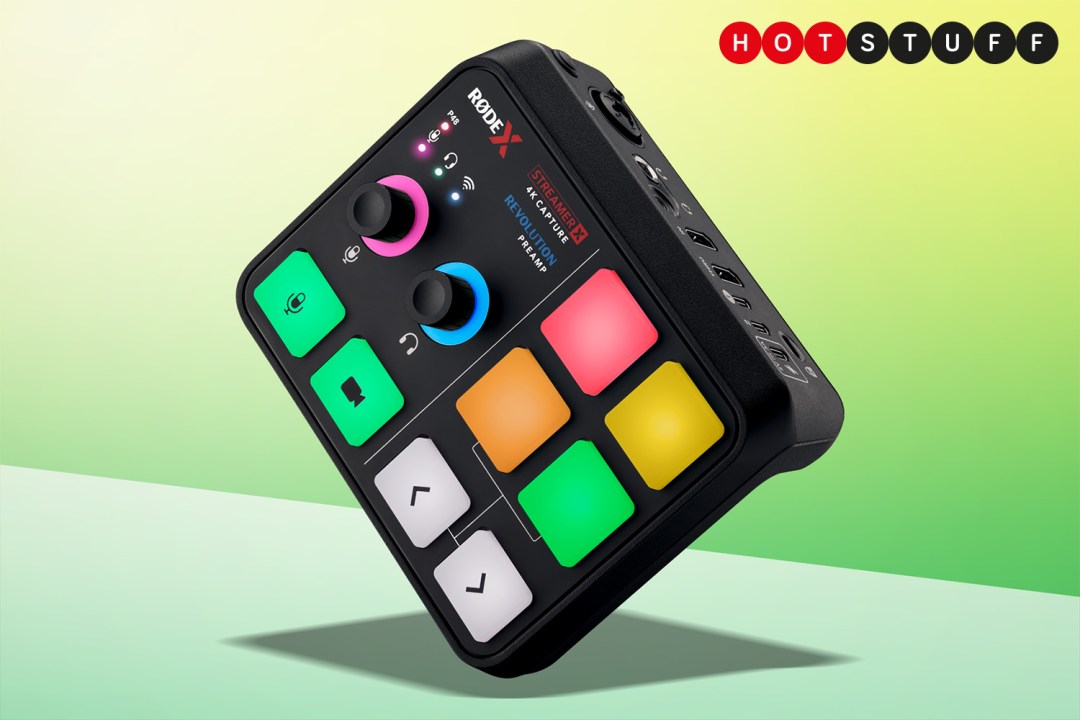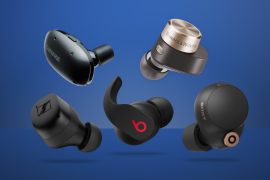Rode Streamer X blends sound and screen capture
Gamer-friendly gear joined by new Podmic and compact Rodecaster Duo

Rode has been an audio expert for years, but now the Aussie firm is branching out to video capture with the new Rode Streamer X. Aimed at gamers and content creators, the compact all-in-one can handle 4K footage as well as multiple audio inputs, and is small enough to slip onto just about any desk. It was announced at the NAB show in Las Vegas, alongside a new dual connectivity PodMic USB microphone and Rodecaster Duo audio interface.
The Streamer X can handle 4K30 or 2K60 resolution streaming, as well as 4K60 and 2K120 passthrough, with XLR, 6.3mm and 3.5mm audio inputs and outputs at the rear for hooking up a microphone and headphones or gaming headset. Dual USB-C connections let you connect to multiple PCs simultaneously (handy if you have one machine dedicated to gaming and another for editing, live streaming or storing footage).
Up top simplicity is the order of the day, with illuminated volume and gain dials, microphone mute and video record buttons, and four customisable smart pads that can trigger sound effects or video transitions. It all plays nicely with Rode’s multitude of software, including Rode Central and Rode Connect. Inside it has the same APHEX audio processing and Revolution Preamp as the firm’s more feature-packed audio interfaces.


Speaking of, the Rodecaster Duo is aimed at podcasters and creators that don’t need all the bells and whistles of the Rodecaster Pro II. It has twin XLR microphone inputs, two 6.3mm headphone outputs and a balanced line output for hooking up to a set of speakers at the rear, along with four channel sliders rather than six and six smart pads rather than eight up front. The comprehensive touchscreen display makes a return, though, as does the quad-core audio engine, Aphex processing and Revolution Preamps.
The other big new announcement was the PodMic USB, which essentially inherits the same dual USB-C and XLR connectivity as the NT1 5th Generation. Used over XLR it’s identical to the original PodMic, just with an uprated pop filter and new finish; plug in over USB-C, though, and you get a built-in Revolution Preamp for analog-to-digital conversion, and on-board DSP for adding processing effects to any recording. It’ll play nicely with phones and tablets now, as well as Rode’s entire software selection, and keeps the zero-latency headphone output and on-board volume control as the original.
Rode also used its NAB appearance to announce firmware updates for its Wireless Go II wireless microphones, which gain the ability to save recordings as WAV files and start/stop recordings using the power buttons on the transmitter and receiver. The Rodecaster Pro II also saw some love, with the ability to connect any Rode Series IV wireless transmitter for direct recordings. There’s no exact date for when the firmware will roll out, though.
There’s no word on pricing for any of the newly revealed products just yet. Expect official release dates to land in the coming weeks.



